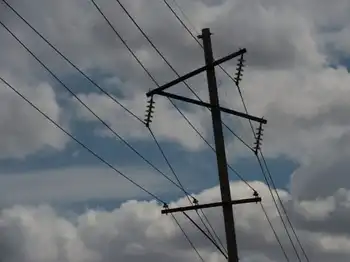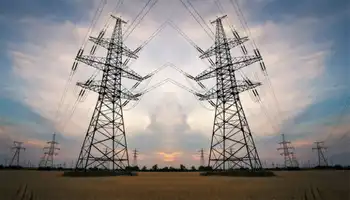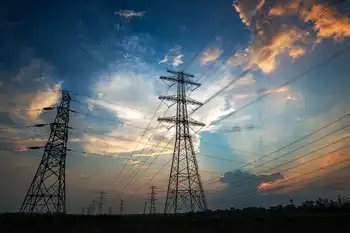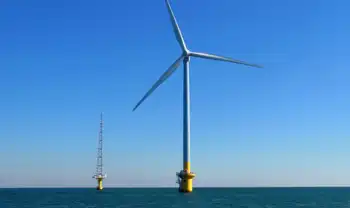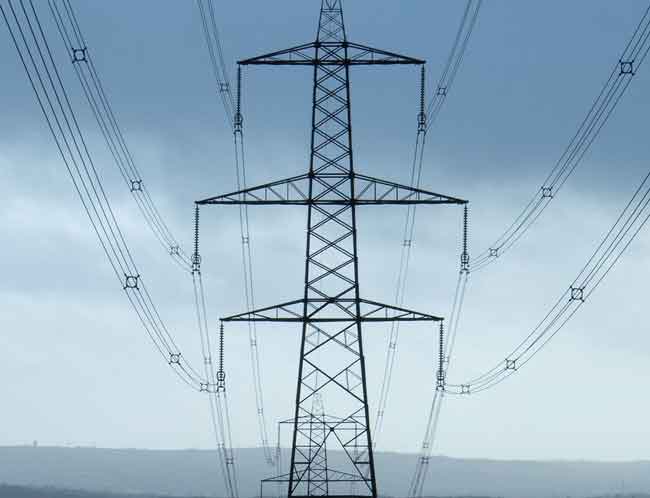Old school fuel – coal
By Montreal Gazette
Protective Relay Training - Basic
Our customized live online or in‑person group training can be delivered to your staff at your location.

- Live Online
- 12 hours Instructor-led
- Group Training Available
Coal, despite its abundance and reliability, will never classify as a new carbon-free alternative. Ironically, however, clean-coal legislation Ottawa is about to announce could wind up securing the fossil fuelÂ’s long-term future in Canada.
Federal Environment Minister Jim Prentice is about to roll out a new environmental standard for CanadaÂ’s coal industry, a set of rules that could begin to shutter coal-fired electricity plants as early as 2013 and dramatically change the natural gas market.
The regulations could also drive up power prices, create additional volatility and even make electricity supply spotty. That is, unless Mr. Prentice manages to craft the rules to avoid problems associated with transforming coal plants into cleaner-burning natural gas facilities.
His plan has not been finalized, but industry executives consulted on the legislation expect him to rule that coal-fired power plants must retire when they hit their 45th birthday or when their power purchase agreements expire, whichever is latest.
The power plants must then convert to another fuel source, such as natural gas, or be compatible with carbon capture and storage by a set date. Some coal plants may receive an extension past their 45-year lifespan based on factors such as the amount of capital that has been invested in them or retrofits, sources said.
Mr. PrenticeÂ’s office did not address questions about the proposed rules.
“Simply, [coal] is too big a piece of the energy mix to replace in the near term,” said Jim Oosterbaan, senior vice-president of commercial services at Capital Power Corp. The Edmonton-based company’s power facilities across Canada use hydrocarbons and renewable sources of fuel. “There will be solutions that will be found that will see coal playing a significant role going forward.”
After all, North America and much of the globe depends on the old-school fuel. Coal generated roughly 97,300 gigawatt hours of electricity in Canada in 2008, second only to hydro, which created 340,100 gwh, according to Environment CanadaÂ’s submission to the UN Framework Convention on Climate Change. Coal provided about 17 of CanadaÂ’s electricity in 2008, a 26 increase from 1990.
Further, Canada’s proven recoverable reserves of coal are about 10 billion tonnes — more energy than the country’s natural gas, conventional oil and oil sands sources combined, according to the Canadian Clean Power Coalition.
In short, it is necessary, abundant — but dirty. Coal-fired generation was responsible for about 83 of domestic electricity-related greenhouse gas emissions in 2008, the Environment Canada report says. Greenhouse gas emissions from natural gas-fired power plants per kilowatt-hour, on the other hand, are about half that of coal.
So it makes sense for Mr. Prentice to want to replace coal with natural gas. ThatÂ’s the quickest way to reduce emissions. But before his vision can be executed he, along with consumers and power producers, have to sort through the implications of any new rules.
“In a natural gas-fired electricity plant, the fuel, the natural gas, is approximately 70 of the cost of your power,” said Steve Snyder, chief executive of TransAlta Corp. “And natural gas has historically been sold on a very short-term basis, thus it is very volatile. The electricity prices coming out of those plants are volatile.”
The solution to that may be a wholesale makeover of the natural gas market.
“One way to remove that volatility is to have a long-term market for pricing natural gas,” Mr. Snyder said. “That doesn’t exist today. That is something that the natural gas producers will have to evolve to over time. Because of shale gas, there seems to be a trend towards that, but it is not in place today.”
While that may prevent price shocks once natural gas plants take over coal facilities, a system to keep prices smooth as one coal plant goes down in order to transform into a natural gas facility is also necessary. And thatÂ’s assuming producers are willing to build such projects. For that to happen, the government must draw up rules for carbon dioxide emissions relevant to natural gas-fired electricity plants.
“You don’t want to be in a position where 10 years out you build a gas plant and then you’re forced to shut it down because it doesn’t meet new CO2 regulations,” Mr. Snyder said.
“No one in their right mind would build the plant.”
Ditching an abundant source of fuel isnÂ’t a wise move, says Eric Newell, chairman of the Climate Change Emissions Management Corp., as well as Alberta Innovates Energy and Environment Solutions. He is also the former head of Syncrude Canada Ltd., the oil sands monolith.
“We would make a real mistake in this province if we walked away from coal,” he said. It is too cheap, plentiful and needed to meet growing demand. More important, Canadians are making progress when it comes to coal and the environment.
“The technologies that show the greatest promise for us to develop our coal resources responsibly are carbon capture and gasification,” Mr. Newell said.
Swan Hills Synfuels LPÂ’s gasificaction project is a prime example. The private company, which received a $285-million grant from Alberta, takes coal, puts it under pressure, heats it up and adds steam, which converts the coal to a gas, said Martin Lambert, the companyÂ’s chief executive. The product it creates is called syngas. Swan Hills has a pilot project underway in Alberta.
The small five-year-old company then strips out the carbon dioxide, leaving a product that is one-third natural gas and two-thirds hydrogen gas which can be used to create electricity.
“We give the power plant less carbon than natural gas guys do, so less carbon goes out the stack,” Mr. Lambert said. He agreed with Mr. Prentice’s push to retire Canada’s fleet of aging coal-fired power plants, but thinks their 45-year lease on life is too long.
“Our process will be the best of both worlds in the sense that there’s a lot of coal, you get to continue to use coal, but you get a very clean environmental footprint. Even cleaner than natural gas.”
Carbon capture and storage CCS also presents an opportunity to lower emissions tied to coal-fired power plants.
One CCS booster is TransAltaÂ’s Mr. Snyder, who also argues clean coal can trump natural gas when it comes to the environment.
“What CCS holds out the promise for is even more reductions [than natural gas] and even more cost effective. But it is out further,” he said. “If CCS works, it will eliminate 90 of the CO2, where a natural gas plant is still producing at about four times that rate.”
While executives are quick to outline the problems tied to the 45-year retire-and-covert policy known as capital stock turnover, they all agree it can — and should — be done. Mr. Prentice, they say, has been sensitive to their concerns and is carefully taking into consideration all the kinks such legislation could create for producers as well as consumers. He has been consulting with them for about two years, one of the executives said.
“It is a fair compromise,” Capital Power’s Mr. Oosterbaan said.





